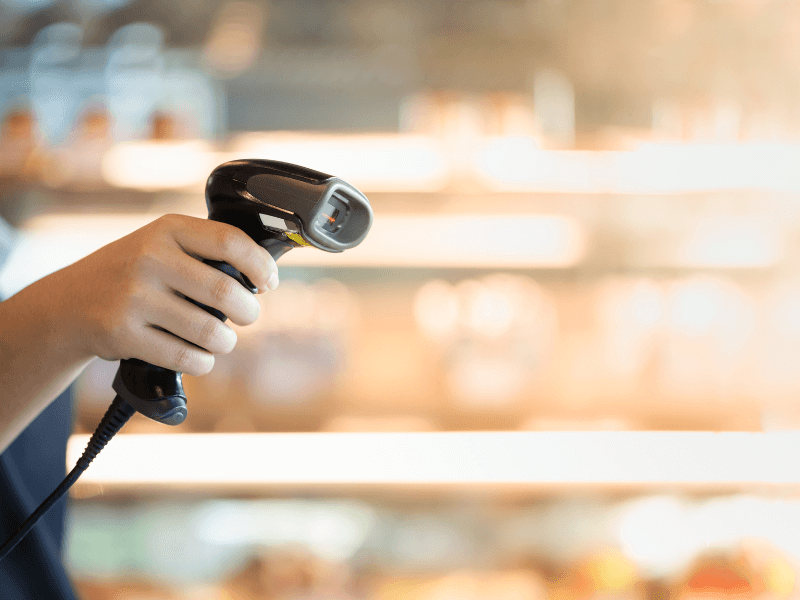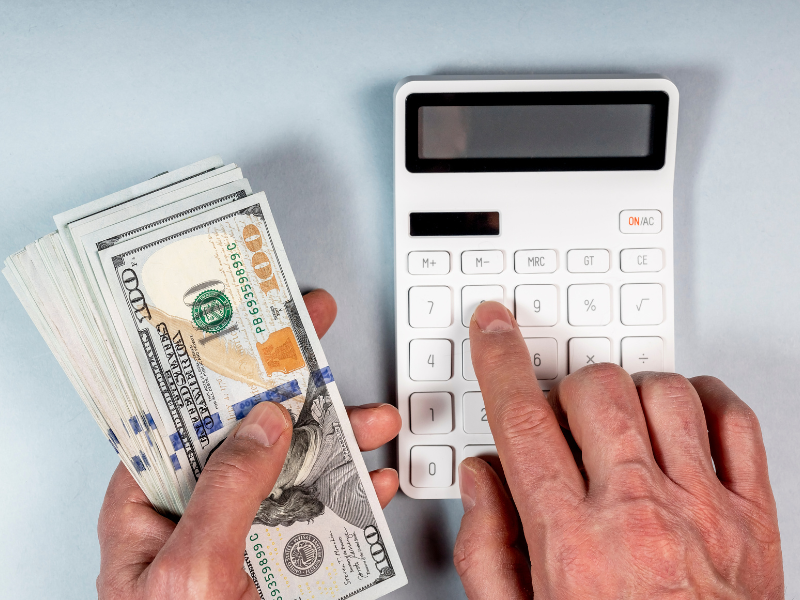From the boom in eCommerce to the humble shopping cart, there’s no part of the retail world that hasn’t undergone significant transformation.
Nowadays, many retailers are making the transition from traditional, old-fashioned shopping carts to shopping smart carts equipped with high-tech features designed to enhance the shopping experience. However, does this widespread adoption of shopping smart carts mean you should follow suit? When it comes to budget constraints and consumer expectations, businesses are faced with a crucial decision: whether to make the leap to shopping smart carts or to continue using traditional carts.
To aid in this decision-making process, we will delve into the differences between these two types of carts and examine what sets smart carts apart from their traditional counterparts.
Scan While Shopping

Traditional shopping carts have been a staple in retail stores for decades. While they serve their primary purpose of holding goods before purchase, traditional carts offer little beyond this basic functionality.
The shopping smart cart is a game-changer in how customers interact with their shopping environment. Unlike traditional carts, smart shopping cart technology introduces the capability for shoppers to scan items as they add them to their cart. This feature represents a significant departure from the traditional shopping routine, where customers typically fill their cart, unload items at the checkout, and then repack them after purchase.
The advent of smart carts streamlines this process by allowing items to be scanned in real time as they are placed into the cart. This innovation eliminates the need for unloading and reloading at checkout, simplifying the shopping experience. Shoppers can now enjoy a more efficient checkout process, directly attributing to a seamless flow from aisle to exit.
Weigh and Scan Items
For items that require pricing by weight, shopping smart carts excel by integrating weighing capabilities directly into the cart, allowing for immediate pricing as items are added. This feature effectively removes yet another layer of time-consuming effort from the shopping equation—a feat traditional carts simply cannot match.
This functionality is particularly transformative in grocery stores, where produce often sells by weight. Equipped with built-in scales and a user-friendly interface, smart carts enable shoppers to easily identify and weigh their selections, calculating the cost on the spot. The advanced technology behind these smart scales is both impressive and crucial for streamlining the shopping experience, showcasing the smart cart’s ability to not only accommodate but anticipate shopper needs by including scale technology right where it’s needed most.
Track Total While Shopping

With the advent of shopping smart carts, every item scanned as it’s placed in the cart provides customers with an immediate, running total of their expenditure. This innovative feature starkly contrasts the experience with traditional shopping carts, where customers are left to mentally tally their spending—a task both cumbersome and prone to error. Traditional carts, while functional, lack the means to assist shoppers in managing their budgets in real-time.
The transparency of shopping smart carts empowers shoppers to make informed decisions, ensuring they can stick to their budget and prioritize their essential purchases without any surprises at the checkout. Such a capability significantly enhances the shopping experience, fostering customer satisfaction and, by extension, loyalty.
Recommend Products and Discounts
Smart shopping carts revolutionize the way customers interact with their shopping by not just tallying prices, but also by recognizing items placed inside them. This capability far surpasses the passive function of traditional shopping carts, which merely serve as vessels for goods without offering any interactive feedback or suggestions. Through an intuitive display, smart carts recommend complementary products and highlight discounts, directly responding to the shopper’s selections. For instance, loading pasta into a smart cart could prompt a reminder to pick up sauce, or suggest a sauce that’s currently on sale, enhancing the shopping experience with personalization in retail that a traditional cart simply cannot provide.
This level of interaction not only aids shoppers in remembering essential or complementary items but also opens up a dynamic channel for businesses to subtly increase sales by recommending additional purchases. In contrast, the traditional cart’s lack of technological integration means missed opportunities for both customer convenience and business upselling.
Learn Customer Trends with Shopping Smart Carts

Just as they adeptly recommend complementary products, smart carts are instrumental in deciphering and conducting checkout trend analysis by collecting comprehensive data on shopper behavior and preferences. This analytical capability is a significant leap beyond the passive role of traditional shopping carts, which, while facilitating the checkout process, fail to capture the nuanced patterns of shopper interactions within the store. Through smart carts, retailers gain insights into how customers navigate aisles, their product preferences, and shopping frequencies, information that is crucial for optimizing store layout, inventory management, and staff deployment to enhance overall store efficiency and customer satisfaction.
Pay and Leave
As mentioned, smart carts can help to make the check-out process easier because every item doesn’t need to be unloaded and loaded again into a traditional cart. In fact, smart carts eliminate this process altogether. After all, items are scanned and prices are calculated as items are placed in the cart.
Whenever a customer is finished shopping, they can use the cart’s touchscreen to enter their payment information and they will be ready to leave. Unlike traditional shopping carts, there is no need to go to a centralized checkout station, even if the store offers self-checkout. Of course, the cart itself will have to be returned at some point. However, paying for items can be done while standing in front of the cart once the last item has been added.
Shoppers Must Learn to Use Shopping Smart Carts

At Shekel, we bridge the gap between innovation and familiarity, offering retailers the opportunity to enhance their existing infrastructure without the need for a complete overhaul. Our shopping smart carts are designed to seamlessly integrate with any traditional cart you already own. This means retailers don’t have to invest in entirely new carts to enjoy the benefits of smart technology; they can upgrade their current traditional carts to smart carts effortlessly.
While it’s true that the introduction of smart carts represents a shift in the shopping experience, requiring customers to familiarize themselves with new technology, the transition is made smoother with Shekel’s solution. Customers can continue using the carts they are comfortable with, now enhanced with smart capabilities. This approach minimizes hesitation and reduces the learning curve associated with adopting smart cart technology.
Ready to elevate your retail experience with minimal disruption and maximum benefit? Transform your traditional shopping carts into cutting-edge smart carts with Shekel’s innovative solutions. Contact us today to learn how easy it is to upgrade your carts and step confidently into the future of retail.




